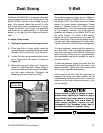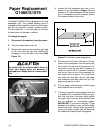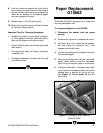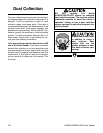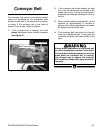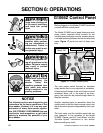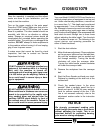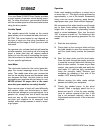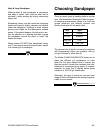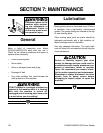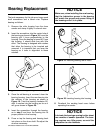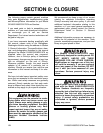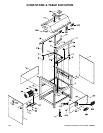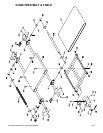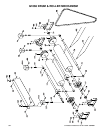
G1066/G1066Z/G1079 Drum Sander -25-
Choosing Sandpaper
There are many types of sanding belts to choose
from. We recommend Aluminum Oxide for gener-
al workshop environments. Below is a chart that
groups abrasives into different classes, and
shows which grits fall into each class.
The general rule of thumb is to sand a workpiece
with progressively higher grit numbers, with no
one grit increase of more than 50.
The Model G1066/G1066Z/G1079 allows you to
place two different grit sandpapers on each
drum.The first drum should have a coarser grit
than the second. Usually this translates into com-
binations of successive group types. A common
selection for stock that is planed before being
sanded is a 100/150 grit combination.
Ultimately, the type of wood you use and your
stage of finish will determine the best grit types to
install on your sander.
Grit Type
60
80-100
120-180
220
Coarse
Medium
Fine
Very Fine
Hook & Loop Sandpaper
Although hook & loop sandpaper is convenient
and easy to install, care must be taken not to
overload it while sanding by taking excessively
heavy cuts.
Excessively heavy cuts will cause the underlying
hooks and loops to slightly depress and deform
under the sandpaper, resulting in small surface
grooves and ridges on all subsequently sanded
pieces. If this should happen, the only way to cor-
rect the situation is to unwrap and then re-wrap
the sandpaper around the drum to “reset” the
hooks and loops.
Simply stated: DO NOT take excessively heavy
cuts. If you need to remove material faster, switch
to a coarser grit of sandpaper.



